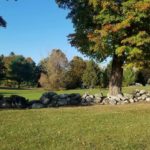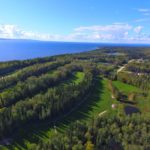What is a Parkland course
According to the Professional Golfers’ Association, golf courses are linked, either desert or parkland courses, wherein parkland courses are those types golf course categorized by their design elements and natural setting with many trees and lush greens.
A long time ago, all courses were links, set along coastlines, open to the wind, sandy and treeless, but eventually, golf moved inland, and courses built away from coastal areas tended to be much more pastoral in setting and design: greener, lusher, lots of trees — they were “park-like,” hence the term “parkland course.”
A parkland course is a golf course in a lush, inland setting, one with well-manicured and watered fairways and rough and greens. There might be plenty of elevation change around such a course, but even if there is, a parkland course’s fairways are generally flat, lacking the knobs and knolls and weird bounces of links fairways.
Parkland courses in general are fashioned out of the existing ‘geography’ of the area and maximum use is made of the natural features of the landscape. If there is a convenient lake or stream it can be incorporated, as can any thickets or woodland. The important thing to look for in the design of a parkland course is variety from one hole to the next and, if possible, to give each hole its own character. Whereas the parkland course draws its character from the available features and makes it necessary for a player to have a strategy, the links has a constantly changing character that challenges the player at every outing.
Most PGA Tour courses are parkland courses, but the Augusta National Golf Club in Georgia, where the annual Masters Tournament is held, is the parkland course that other parkland golf courses aspire to be.







